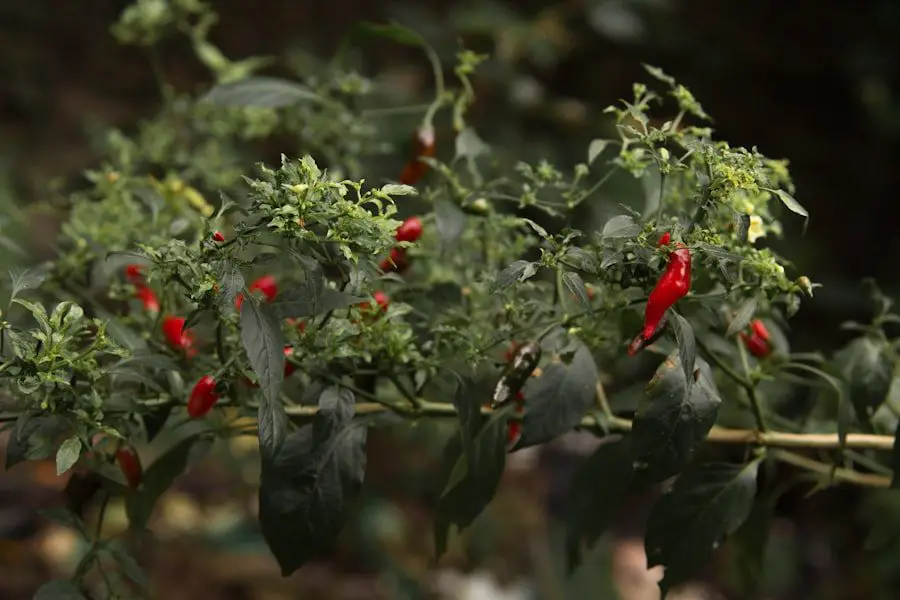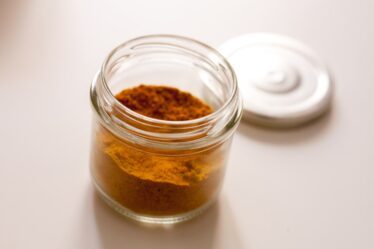
Chipotle pepper is a type of chili pepper that is known for its smoky and spicy flavor. It is made from ripe jalapeno peppers that have been dried and smoked. Chipotle peppers are commonly used in Mexican and Tex-Mex cuisine to add heat and depth of flavor to dishes. The level of spiciness in chipotle pepper can vary, but it generally falls in the medium to hot range on the Scoville scale, which measures the heat of chili peppers.
In cooking, chipotle pepper is often used in the form of chipotle powder or chipotle paste. It can be added to marinades, rubs, sauces, and soups to give them a smoky and spicy kick. Chipotle pepper pairs well with ingredients like tomatoes, onions, garlic, and cumin, which are commonly found in Mexican cuisine. It can also be used to add heat to dishes like chili con carne, tacos, and enchiladas.
Key Takeaways
- Chipotle pepper is a type of chili pepper that is known for its smoky and spicy flavor.
- Chipotle pepper originated in Mexico and has been used in traditional Mexican cuisine for centuries.
- The spiciness of chipotle pepper comes from a compound called capsaicin, which stimulates pain receptors in the mouth.
- Chipotle pepper is a good source of vitamins and minerals, including vitamin C and potassium.
- Chipotle pepper can be used in a variety of dishes, including soups, stews, marinades, and sauces, and is popular in many different cuisines around the world.
The History of Chipotle Pepper and its Origins
The origin of chipotle pepper can be traced back to ancient Mexico. It is believed that the Aztecs were the first to discover the process of smoking jalapeno peppers to create chipotle pepper. They would dry the peppers over open fires and then smoke them for several days until they were completely dried out. This process not only preserved the peppers but also gave them a unique smoky flavor.
Chipotle pepper has a long history of culinary and cultural significance in Mexico. It was used by the Aztecs as a seasoning for their food and was also believed to have medicinal properties. The use of chipotle pepper spread throughout Mexico and eventually made its way into other parts of the world through trade routes.
The Science Behind Chipotle Pepper’s Spiciness
The spiciness of chipotle pepper comes from a group of chemical compounds called capsaicinoids. The main capsaicinoid found in chipotle pepper is capsaicin, which is responsible for the heat sensation. When capsaicin comes into contact with the taste buds, it binds to pain receptors, causing a burning sensation.
Capsaicin works by stimulating the release of endorphins, which are natural painkillers produced by the body. This is why some people experience a sense of euphoria or a “spice high” when eating spicy foods. The level of spiciness in chipotle pepper can vary depending on factors such as the variety of pepper, growing conditions, and how it is processed.
The Nutritional Benefits of Chipotle Pepper
| Nutrient | Amount per 100g | % Daily Value |
|---|---|---|
| Calories | 40 | 2% |
| Protein | 1.9g | 4% |
| Fat | 0.9g | 1% |
| Carbohydrates | 8.8g | 3% |
| Fiber | 1.9g | 8% |
| Vitamin A | 18% | |
| Vitamin C | 9% | |
| Iron | 5% | |
| Potassium | 9% |
Chipotle pepper is not only flavorful but also packed with vitamins and minerals. It is a good source of vitamin A, vitamin C, and potassium. Vitamin A is important for maintaining healthy vision and immune function, while vitamin C is an antioxidant that helps protect against cell damage. Potassium is essential for maintaining proper heart and muscle function.
In addition to vitamins and minerals, chipotle pepper also contains antioxidants that help fight inflammation and oxidative stress in the body. These antioxidants have been linked to a reduced risk of chronic diseases such as heart disease and cancer. Chipotle pepper is also low in calories and fat, making it a healthy addition to a balanced diet.
The Culinary Uses of Chipotle Pepper in Cooking
Chipotle pepper can be used in a variety of ways in cooking to add flavor and heat to dishes. It can be used as a dry rub for meats like chicken, pork, or beef before grilling or roasting. The smoky flavor of chipotle pepper pairs well with the charred flavors from grilling or roasting.
Chipotle pepper can also be used to make marinades and sauces. It can be combined with ingredients like lime juice, garlic, and honey to create a flavorful marinade for meats or a spicy sauce for tacos or burritos. Chipotle pepper can also be added to soups, stews, and chili to give them a smoky and spicy kick.
The Different Types of Chipotle Pepper and their Flavor Profiles

There are several different types of chipotle pepper, each with its own unique flavor profile. The most common type is made from jalapeno peppers, which have a medium level of spiciness and a smoky flavor. Other types of chipotle pepper include morita chipotle, which is made from red jalapeno peppers and has a slightly sweeter and smokier flavor, and meco chipotle, which is made from fully ripened jalapeno peppers and has a milder heat and a rich smoky flavor.
The flavor profile of chipotle pepper can vary depending on how it is processed. Chipotle peppers that are dried and smoked for a longer period of time will have a stronger smoky flavor, while those that are dried and smoked for a shorter period of time will have a milder smoky flavor. The level of spiciness can also vary depending on the variety of pepper used.
The Health Benefits of Eating Spicy Foods
Eating spicy foods, including chipotle pepper, can have several potential health benefits. Spicy foods have been found to increase metabolism and promote weight loss. The heat from capsaicin in chipotle pepper can increase body temperature and boost metabolism, leading to increased calorie burning.
Spicy foods like chipotle pepper may also help reduce inflammation in the body. Capsaicin has been shown to have anti-inflammatory properties and may help reduce the risk of chronic diseases such as heart disease and cancer. Spicy foods may also help improve digestion by increasing the production of digestive enzymes.
The Global Popularity of Chipotle Pepper in Different Cuisines
Chipotle pepper has gained popularity in cuisines around the world, not just in Mexican and Tex-Mex cuisine. It is used in dishes from countries such as the United States, India, Thailand, and Korea. In the United States, chipotle pepper is commonly used in Tex-Mex dishes like burritos, tacos, and enchiladas. It is also used in barbecue sauces and marinades.
In Indian cuisine, chipotle pepper is used to add heat and smokiness to dishes like curries and chutneys. In Thai cuisine, chipotle pepper is used in spicy stir-fries and soups. In Korean cuisine, chipotle pepper is used to make kimchi, a traditional fermented cabbage dish.
The Best Pairings for Chipotle Pepper in Food and Drinks
Chipotle pepper pairs well with a variety of flavors and ingredients. It can be paired with ingredients like tomatoes, onions, garlic, and cumin to create a flavorful base for sauces, soups, and stews. Chipotle pepper also pairs well with ingredients like lime juice, honey, and cilantro to create a balance of heat and sweetness.
In terms of drinks, chipotle pepper can be used to add a spicy kick to cocktails like margaritas or bloody marys. It can also be used to make spicy infused spirits or syrups for cocktails.
The Future of Chipotle Pepper and its Role in the Food Industry
Chipotle pepper has already gained popularity in the food industry, but its potential for growth is still significant. As consumers continue to seek out bold and unique flavors, chipotle pepper offers a smoky and spicy option that can enhance a wide range of dishes.
In addition to its culinary uses, chipotle pepper also has potential applications in the health and wellness industry. The health benefits of capsaicin have been well-documented, and chipotle pepper could be used as a natural ingredient in supplements or functional foods.
Overall, chipotle pepper is a versatile and flavorful ingredient that has a bright future in the food industry. Its unique smoky and spicy flavor profile, along with its potential health benefits, make it a popular choice for chefs and home cooks alike. Whether used in traditional Mexican dishes or innovative culinary creations, chipotle pepper is sure to continue to spice up the world of food.
If you’re a fan of spicy flavors, you’ll definitely want to check out this article on “Kaara Kozhambu: A Spicy Tamarind Stew” from Flavorful Sips. It explores the delicious world of this fiery South Indian dish that combines the tanginess of tamarind with a medley of spices. Discover the secrets behind creating the perfect balance of heat and flavor in this traditional recipe. Read more about this mouthwatering culinary adventure and take your taste buds on a spicy journey.



